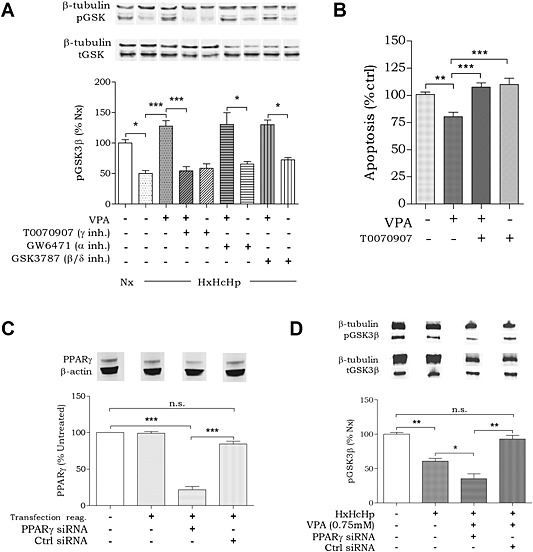Figure 4.

Protection against haemorrhagic shock‐like signalling depends on PPARγ activity. Huh7 cells were incubated for 4 h in the presence of hypoxia (2% O2), hypercapnia (10% CO2) and hypothermia (32°C) (HxHcHp). (A) Cells were treated with VPA (0.75 mM) and PPAR inhibitors (T0070907 and GW6471 50 μM; GSK3787 10 μM), and protein extract was analysed for pGSK3β‐Ser9 levels and β‐tubulin loading control. (B) Apoptotic signalling in Huh7 cells in response to VPA (0.75 mM) and/or PPARγ inhibitor T0070907 (50 μM) was analysed using a commercial assay (Promega). (C) PPARγ was knocked down in Huh7 cells using four commercially produced (Qiagen) variants of PPARγ siRNA. A scrambled siRNA (Ctrl) was used as negative control. Huh7 cells were transfected in standard cell culture conditions (5% CO2, 37°C). (D) Cells with and without PPARγ knockdown were tested for pGSK3 regulation under equivalent haemorrhagic shock‐like and treatment conditions. Data were quantified from at least triplicate experiments with technical triplicates (n ≥ 9) ± SEM. Data were normalized to untreated (A and B), untransfected (C) and Nx (D) and were analysed using one‐way ANOVA and post hoc Tukey test.
